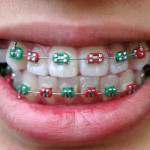
Satisfaction with orthodontic treatment is related to a number of factors. For the dentist this is likely to relate to a good functional and aesthetic outcome, while for a patient a range of factors have been reported such as doctor-patient tooth alignment, patients’ commitment and interest, personality and neuroticism traits, and patient motivation. The aim of this review was to identify factors associated with orthodontic treatment satisfaction among patients and their parents after treatment.
Methods
Searches were conducted in the Medline/PubMed, Embase, LILACS, EBM reviews, Web of Science and Google Scholar databases. Two reviewers independently selected studies with data abstraction being completed by a single review and cross-checked by a second reviewer. Study quality was assessed using the Newcastle-Ottawa scale, modified for cross-sectional studies. Studies evaluating satisfaction levels of patients or parents and caregivers after orthodontic treatment, assessed by any tool, with no language or study design restrictions were considered. A narrative summary was presented.
Results
- 18 studies involving a total of 2891 patients and 464 parents were included.
- There were large variations in sample sizes (range, 50-294 patients or parents), ages (range, 15- 61 years old), outcome evaluation tools, and time passed since the removal of the orthodontic appliances.
- All studies used questionnaires.
- Based on the available limited evidence, satisfaction was associated with perceived aesthetic outcomes, psychological benefits, and quality of care. The latter was specifically linked to dentist-staff-patient interactions.
- Dissatisfaction was associated with treatment duration, pain levels and discomfort, and the use of retention appliances. When both assessments were available, the patient’s and the parent’s satisfaction levels were strongly correlated.
Conclusions
The authors concluded:
Based on limited available evidence with a moderate risk of bias, patients’ and their parents’ satisfaction levels with orthodontic treatment were generally high. Overall satisfaction was associated with pleasing perceived aesthetic outcomes, perceived psychological benefits of treatment, positive patients’ personality traits, and good quality of care linked to dentist-staff-patient interactions. Dissatisfaction was associated with longer treatment duration, increased pain or discomfort levels, and problems with retention appliance usage.
Comments
The authors have performed a broad search for studies identifying 18 that were relevant. All the included studies were based on questionnaires and the review authors rightly raise the question as to whether the currently available satisfaction tools are sufficiently robust to assess the relevant perceptions and beliefs.
The authors also raise questions regarding the sample sizes of the included studies, noting that only 1 study included a power calculation to justify the sample. The included studies sampled patients at various points after orthodontic treatment and this could also affect responses.
A better understanding of the factors that have an important bearing on the orthodontic treatment is clearly advantageous for clinicians as they can then help mitigate these. While this current review does provide some useful pointers, further studies are needed as this information is based on limited evidence.
Links
Pachêco-Pereira C, Pereira JR, Dick BD, Perez A, Flores-Mir C. Factors associated with patient and parent satisfaction after orthodontic treatment: A systematic review. Am J Orthod Dentofacial Orthop. 2015 Oct;148(4):652-9. doi: 10.1016/j.ajodo.2015.04.039. Review. PubMed PMID: 26432321.

Factors associated with patient satisfaction after orthodontic treatment http://t.co/fyumXBTCZ7
Factors associated with parent satisfaction after orthodontic treatment http://t.co/fyumXCbdQF
Patients’ satisfaction levels with orthodontic treatment generally high http://t.co/fyumXCbdQF
Don’t miss – Satisfaction with orthodontic treatment http://t.co/fyumXCbdQF